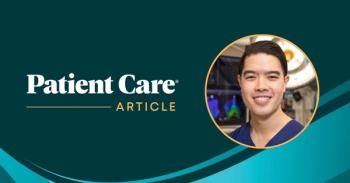
Top Papers Of The Month: Stroke Prediction That's as Easy as ABCD
n the first 7 days after a transient ischemic attack (TIA), the risk of a stroke is 10%.1 If half the patients who presented with TIAs were admitted and received an immediate workup within that 7-day window, only 5% of them would have a stroke.1 Thus, many patients would undergo unnecessary tests. Some would have complications, and the costs would be prohibitive. What is needed is a way to identify patients who are at high risk for a stroke in the immediate future--and who require emergent assessment.
Which patients with a transient ischemic attack have the highest short-term risk of stroke?
In the first 7 days after a transient ischemic attack (TIA), the risk of a stroke is 10%.1 If half the patients who presented with TIAs were admitted and received an immediate workup within that 7-day window, only 5% of them would have a stroke.1 Thus, many patients would undergo unnecessary tests. Some would have complications, and the costs would be prohibitive. What is needed is a way to identify patients who are at high risk for a stroke in the immediate future--and who require emergent assessment.
A SCORE THAT PREDICTS STROKE RISK
To predict the risk of stroke in the first 7 days after a TIA, Rothwell and coworkers1 created a 6-point scoring system (ABCD) derived from a population-based cohort (n = 209):
•Age: 60 years or older, 1 point.
•Blood pressure: 1 point for either systolic pressure higher than 140 mm Hg or diastolic pressure of 90 mm Hg or higher.
•Clinical features: unilateral weakness, 2 points; speech disturbance without weakness, 1 point.
•Duration of TIA: longer than 60 minutes, 2 points; 10 to 59 minutes, 1 point.
Ninety-five percent of the strokes (19/20) occurred in 27% of the patients (n = 101) with ABCD scores of 5 or higher. The 7-day risk of stroke after TIA was 0.4% in patients with a score of less than 5, 12.1% with a score of 5, and 31.4% with a score of 6.
IMPLICATIONS FOR PRIMARY CARE PRACTICE
How will the ABCD score enhance patient care? Triage of patients can be improved. Effective treatments (eg, aspirin, warfarin for atrial fibrillation, early thrombolysis, and carotid endarterectomy) can be initiated to prevent strokes before they produce irreversible damage. Public education programs aimed at recognition of ABCD predictors may motivate patients to seek help earlier.
In an era of increasingly sophisticated technology, simply asking patients with TIA their age and how long they have had neurologic symptoms--coupled with a neurologic exam to detect hemiparesis and aphasia--can predict progression to stroke within 1 week. What could be easier and less costly?
Newsletter
Enhance your clinical practice with the Patient Care newsletter, offering the latest evidence-based guidelines, diagnostic insights, and treatment strategies for primary care physicians.


















































































































































































































































































